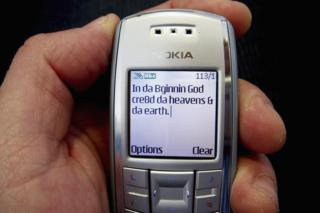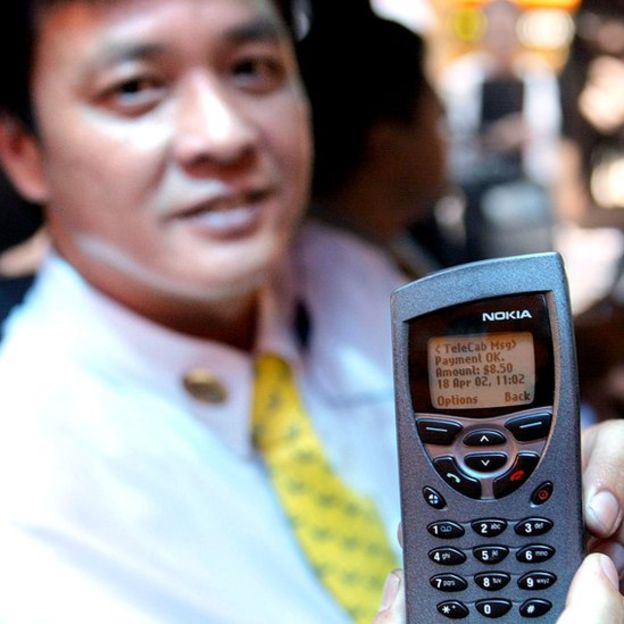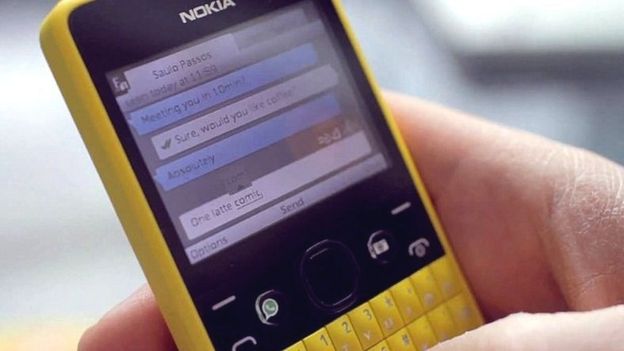Anniversary SMS: how you managed to send the first text message of the story 25 years ago
On December 3 1992, an engineer sent the message "Merry Christmas" from a computer to a mobile device using the mobile phone networks in United Kingdom.
[caption id="" align="aligncenter" width="434"]
 Message[/caption]
Message[/caption]It was the first text message of the story. And this happened exactly 25 years.
However, the idea had gestated long before, during a conference on telecommunications in 1984.
On that occasion, Matti Makkonen, an engineer and ex officio Finnish, thought it would be good to have a message service of cellular phone, what is today known as SMS (Short Message Service or Short Messaging Service).
Something that has carried out eight years later, when Neil Papworth, who was working at a technology company in the Uk, sent this christmas message to Richard Jarvis through the cellular telephone network of the company Vodafone.
And now not only is a idea that is used a few 516.000 million times around the world each month, but that is the basis of the operation of one of the most popular apps on the planet: WhatsApp.
In addition to being the source of other innovations such as the chats, the keyboards with letters in the cell and up the emojis.
[caption id="" align="aligncenter" width="738"]
 Text messages were the most effective form of communication before the appearance of the so-called 'smartphones'.[/caption]
Text messages were the most effective form of communication before the appearance of the so-called 'smartphones'.[/caption]However, the SMS or text messages were a technological advancement that was attended by several parents and various processes needed to revolutionize the digital culture.
[anuncio_b30 id=1]
Multiple parents
Towards the middle of the decade of the 80's, the technology of cell phones started to become popular and more and more telephone networks are unique to provide that service.
But as it spread the use of mobile telephony, there remained in evidence the possibilities that opened up this new way to connect.
"20 years ago, the message was not an element apart. It was just a feature in the revolutionary mobile communications system," said Makkonen to the BBC in 2012, when it marked the 20th anniversary of the landmark digital and he gave us an interview via SMS.
The engineer Finnish, who died in 2015, always pointed out as the true "parent of the text message" to the French engineer Friedhelm Hillebrand and the German Bernard Ghillebaert.
[caption id="" align="aligncenter" width="729"]
 The premise of the text message was to communicate in the simplest way.[/caption]
The premise of the text message was to communicate in the simplest way.[/caption]According to Makkonen, they were the ones who created the standards that allowed the sending of texts via a cell line.
However, several media attributed to Finnish the authorship of the revolution.
"I cannot take the credit. I just got the vision that there was a need and gave you an idea about the concept", he said.
What was accomplished by Hillebrand and Ghillebaert was to determine the protocols required for that to be viable the sending of text messages.
Their work was done under the platform GSM (Global System for Mobile Communications , or Global System for Mobile Communications), which is the technological foundation of mobile telephony services around the world.
[anuncio_b30 id=1]
Of a computer to a phone
The protocol was: basically, the message could not exceed 160 characters for that to work. And that's why the name SMS. Had to do it walking.
[caption id="" align="aligncenter" width="795"]
 Text messages were popularized by Nokia in 1994.[/caption]
Text messages were popularized by Nokia in 1994.[/caption]In 1992, it came to the ears of Neil Papworth, a british engineer employed by Sema Group (now Mavenir Systems), and which at that time was doing work for Vodafone, the leading cell phone provider in the United Kingdom.
"I was a young engineer working on new communications technologies. And I thought that the SMS was a clever way for the employees of the company to send messages to each other," explained Papworth during a conference.
He then used his computer to send a "(Merry_Christmas)" to the phone of Richard Jarvis the then director of Vodafone.
It was the 3 of December of 1992. Jarvis received the message on his portable phone Orbitel 901. The rest is history.
"Personally, I think that the rise of text message achieved when Nokia released a model that facilitated the writing of the texts (the Nokia 2010, 1994)", said the engineer Finnish.
"Beyond what happens in the future, I believe that the text message is going to last forever, because it is a very simple way to communicate," he concluded.
SOURCE > BBC
[anuncio_b30 id=1]


No comments:
Post a Comment